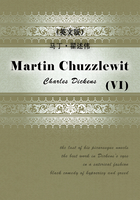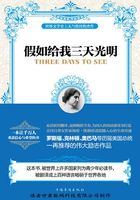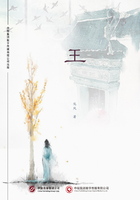At about the time of midday prayer I heard a knock at the door. It was Black from long ago, from our childhood. We embraced. He was chill and I invited him inside. I didn't even ask how he'd found his way to the house. His Enishte must have sent him to question me about Elegant Effendi's absence and his whereabouts. Not only that, he also brought word from Master Osman. "Allow me to ask you a question," he said. "According to Master Osman, 'time' separates a true miniaturist from others: The time of the illustration." What were my thoughts? Listen closely.
Painting and Time
Long ago, as is common knowledge, the illustrators of our Islamic realm, including, for example, the old Arab masters, perceiving the world the way Frankish infidels do today, would regard everything and depict it from the level of a vagabond, mutt or clerk at work in his shop. Unaware of today's perspectival techniques, of which the Frankish masters haughtily boast, their world remained dull and limited, restricted to the simple perspective of the mutt or the shop clerk. Then a great event came to pass and our entire world of illustration changed. Let me begin here.
Three Stories on Painting and Time
ALIF
Three hundred fifty years ago, when Baghdad fell to the Mongols and was mercilessly plundered on a cold day in the month of Safar, Ibn Shakir was the most renowned and proficient calligrapher and scribe not only of the whole Arab world but of all Islamdom; despite his youth, he had transcribed twenty-two volumes, most of which were Korans and could be found in the world-famous libraries of Baghdad. Ibn Shakir believed these books would last until the end of the world, and, therefore, lived with a deep and infinite notion of time. He'd toiled heroically all through the night by flickering candlelight on the last of those legendary books, which are unknown to us today because in the span of a few days, they were one by one torn up, shredded, burned and tossed into the Tigris River by the soldiers of the Mongol Khan Hulagu. Just as the master Arab calligraphers, commited to the notion of the endless persistence of tradition and books, had for five centuries been in the habit of resting their eyes as a precaution against blindness by turning their backs to the rising sun and looking toward the western horizon, Ibn Shakir ascended the minaret of the Caliphet Mosque in the coolness of morning, and from the balcony where the muezzin called the faithful to prayer, witnessed all that would end a five-centuries-long tradition of scribal art. First, he saw Hulagu's pitiless soldiers enter Baghdad, and yet he remained where he was atop the minaret. He watched the plunder and destruction of the entire city, the slaughter of hundreds of thousands of people, the killing of the last of the Caliphs of Islam who'd ruled Baghdad for half a millennium, the rape of women, the burning of libraries and the destruction of tens of thousands of volumes as they were thrown into the Tigris. Two days later, amid the stench of corpses and cries of death, he watched the flowing waters of the Tigris, turned red from the ink bleeding out of the books, and he thought about how all those volumes he'd transcribed in beautiful script, those books that were now gone, hadn't in the least served to stop this horrifying massacre and devastation, and in turn, he swore never to write again. Furthermore, he was struck with the desire to express his pain and the disaster he'd witnessed through painting, which until that day, he'd belittled and deemed an affront to Allah; and so, making use of the paper he always carried with him, he depicted what he saw from the top of the minaret. We owe the happy miracle of the three-hundred-year renaissance in Islamic illustration following the Mongol invasion to that element which distinguished it from the artistry of pagans and Christians; that is, to the truly agonizing depiction of the world from an elevated Godlike position attained by drawing none other than a horizon line. We owe this renaissance to the horizon line, and also to Ibn Shakir's going north after the massacre he witnessed—in the direction the Mongol armies had come from—carrying with him his paintings and the ambition for illustration in his heart; in brief, we owe much to his learning the painting techniques of the Chinese masters. Thereby, it is evident that the notion of endless time that had rested in the hearts of Arab calligrapher-scribes for five hundred years would finally manifest itself not in writing, but in painting. The proof of this resides in the fact that the illustrations in manuscripts and volumes that had been torn apart and vanished have passed into other books and other volumes to survive forever in their revelation of Allah's worldly realm.
BA
Once upon a time, not so very long ago yet not so recently, everything imitated everything else, and thus, if not for aging and death, man would've never been the wiser about the passage of time. Yes, when the worldly realm was repeatedly presented through the same stories and pictures, as if time did not flow, Fahir Shah's small army routed Selahattin Khan's soldiers—as Salim of Samarkand's concise History attests. After the victorious Fahir Shah captured Selahattin Khan and tortured him to death, his first task in asserting his sovereignty, according to custom, was to visit the library and the harem of the vanquished khan. In the library, the late Selahattin Khan's experienced binder pulled apart the dead shah's books, and rearranging the pages, began to assemble new volumes. His calligraphers replaced the epithet of "Always Victorious Selahattin Khan" with that of "Victorious Fahir Shah" and his miniaturists set about replacing the late Selahattin Khan—masterfully portrayed on the most beautiful of manuscript pages—who was, as of that moment, starting to fade from people's memories, with the portrait of the younger Fahir Shah. Upon entering the harem, Fahir Shah had no difficulty in locating the most beautiful woman there, yet instead of forcing himself upon her, because he was a refined man versed in books and artistry, and resolving to win her heart, he engaged her in conversation. Consequently, Neriman Sultan, the late Selahattin Khan's belle of beauties, his teary-eyed wife, made but one request of Fahir Shah: that the illustration of her husband in a version of the romance Leyla and Mejnun, wherein Leyla was depicted as Neriman Sultan and Mejnun as Selahattin Khan, not be altered. In at least this one page, she maintained, the immortality that her husband had tried to attain over the years through books should not be denied. The victorious Fahir Shah bravely granted this simple request and his masters of the book left that one picture alone. Thereby, Neriman and Fahir immediately made love and within a short period, forgetting the horrors of the past, came to truly love each other. Still, Fahir Shah could not forget that picture in Leyla and Mejnun. Nay, it wasn't jealousy that made him uneasy or that his wife was portrayed with her old husband. What gnawed at him was this: Since he wasn't painted in the old legend in that splendid book, he wouldn't be able to join the ranks of the immortals with his wife. This worm of doubt ate at Fahir Shah for five years, and at the end of a blissful night of copious lovemaking with Neriman, candlestick in hand, he entered the library like a common thief, opened the volume of Leyla and Mejnun, and in place of the face of Neriman's late husband, drew his own. Like many khans who had a love for illustrating and painting, however, he was an amateur artist and couldn't portray himself very well. In the morning, when his librarian opened the book on a suspicion of tampering and beheld another figure in place of the late Selahattin Khan, next to Neriman-faced Leyla, rather than identifying it as Fahir Shah, he an-nounced that it was Fahir Shah's archenemy, the young and handsome Abdullah Shah. This gossip provoked Fahir Shah's soldiers and emboldened Abdullah Shah, the young and aggressive new ruler of the neighboring country, who, subsequently, in his first campaign, defeated, captured and killed Fahir Shah, established his own sovereignty over his enemy's library and harem and became the new husband of the eternally beautiful Neriman Sultan.
DJIM
The miniaturists of Istanbul recount the legend of Tall Mehmet—known as Muhammad Khorasani in Persia—mostly as an example of long life and blindness. However, the legend of Tall Mehmet is essentially a parable of painting and time. The primary distinction of this master, who, having begun his apprenticeship at the age of nine, illustrated for more or less 110 years without going blind, was his lack of distinction. I'm not being witty here, but expressing my sincere admiration. Tall Mehmet drew everything, as everyone else did, in the style of the great masters of old, but even more so, and for this reason, he was the greatest of all masters. His humbleness and complete devotion to illustration and painting, which he deemed a service to Allah, set him above both the disputes within the book-arts workshops where he worked and the ambition to become head miniaturist, though he was of appropriate age and talent. As a miniaturist, for 110 years, he patiently rendered every trivial detail: grass drawn to fill up the edges of the page, thousands of leaves, curly wisping clouds, horse manes of short repetitive strokes, brick walls, never-ending wall ornamentation and the slant-eyed, delicate-chinned tens of thousands of faces that were each an imitation of one another. Tall Mehmet was quite content and reserved and he never presumed to distinguish himself or insisted about style or individuality. He considered whichever khan's or prince's workshop he happened to be working in at the time his house and regarded himself as but a fixture in that home. As khans and shahs strangled one another and miniaturists moved from city to city like the women of the harem to assemble under the auspices of new masters, the style of the new book-arts workshop would first be defined in the leaves Tall Mehmet drew, in his grass, in the curves of his rocks and in the hidden contours of his own patience. When he was eighty years old, people forgot that he was mortal and began to believe that he lived within the legends he illustrated. Perhaps for this reason, some maintained that he existed outside time and would never grow old and die. There were those who attributed his not going blind—despite living without a home of his own, sleeping in the rooms or tents which constituted miniaturists' workshops and spending most of his time staring at manuscript pages—to the miracle of time having ceased to flow for him. Some claimed that he was actually blind, and no longer had any need to see since he painted from memory. At the age of 119, this legendary master who'd never married and had never even made love, met the flesh-and-blood ideal of the beautiful slant-eyed, sharp-chinned, moon-faced boy he'd depicted for a century: a part-Chinese part-Croatian sixteen-year-old apprentice in Shah Tahmasp's miniaturists' workshop, with whom quite abruptly and understandably, he fell in love. In order to seduce this boy-apprentice of unimaginable beauty, as a true lover would do, he schemed and joined in power struggles between miniaturists; he gave himself over to lying, deception and trickery. At first, the master miniaturist of Khorasan was invigorated by his attempts to catch up to the artistic fashions he'd successfully avoided for one hundred years, but this effort also divorced him from the eternal legendary days of old. Late one afternoon, staring dreamily at the beautiful apprentice before an open window, he caught cold in the icy Tabriz wind. The following day, during a fit of sneezing, he went completely blind. Two days later, he fell down the lofty stone workshop stairs and died. "I've heard the name of Tall Mehmet of Khorasan, but I never heard this legend," Black said.
He delicately offered this comment to show he knew the story was finished and his mind was occupied with what I'd related. I fell silent for a time so he could stare at me to his heart's content. Since it bothers me when my hands are not occupied, just after beginning the second story, I started to paint again, picking up where I'd left off when Black knocked on the door. My comely apprentice Mahmut, who always sat at my knee and mixed my paints, sharpened my reed pens and sometimes erased my errors, silently sat beside me, listening and staring; from within the house the sounds of my wife's movements could be heard.
"Aahaa," said Black, "the Sultan has arisen."
He stared at the painting with awe, and I pretended the reason for his awe was insignificant, but let me tell you candidly: Our Exalted Sultan appears seated in all two hundred of our circumcision ceremony pictures in the Book of Festivities, watching for fifty-two days the passing of the merchants, guilds, spectators, soldiers and prisoners from the window of the royal enclosure erected for the occasion. Only in one picture of mine is He shown on foot, tossing money from florin-filled pouches to the crowds in the square. My aimwas to capture the surprise and excitement of the crowds punching, kicking and strangling one another as they scrambled to grab coins off the ground, their asses jutting toward the sky.
"If love is part of the subject of the painting, the work ought to be rendered with love," I said. "If there's pain involved, pain should issue from the painting. Yet the pain ought to emerge from the at first glance invisible yet discernible inner harmony of the picture, not from the figures in the illustration or from their tears. I didn't depict surprise, as it has been shown for centuries by hundreds of master miniaturists, as a figure with his index finger inserted into the circle of his mouth, but made the whole painting embody surprise. This, I accomplished by inviting the Sovereign to rise to His feet."
I was intrigued and bothered by how he scrutinized my possessions and illustrating tools, nay my whole life, looking for a clue; and then, I began to see my own house through his eyes.
You know those palace, hamam and castle pictures that were made in Tabriz and Shiraz for a time; so that the picture might replicate the piercing gaze of Exalted Allah, who sees and understands all, the miniaturist would depict the palace in cross-section as though having cut it in half with a huge, magical straight razor, and he'd paint all the interior details—which could otherwise never be seen from outside—down to the pots and pans, drinking glasses, wall ornamentation, curtains, caged parrots, the most private corners, and the pillows on which reclined a lovely maiden such as had never seen the light of day. Like a curious awestruck reader, Black was examining my paints, my papers, my books, my lovely assistant, the pages of a Book of Costumes and the collage album that I'd made for a Frankish traveler, scenes of fucking and other indecent pages I'd secretly dashed off for a pasha, my inkpots of variously colored glass, bronze and ceramic, my ivory penknives, my gold-stemmed brushes, and yes, the glances of my handsome apprentice.
"Unlike the old masters, I've seen a lot of battle, a lot," I said to fill the silence with my presence. "War machines, cannonballs, armies, corpses; it was I who embellished the ceilings of the tents of Our Sultan and our generals. After a military campaign, upon returning to Istanbul, it was I who recorded in pictures the scenes of battle that everyone would otherwise have forgotten, corpses sliced in two, the clash of opposing armies, the soldiers of the miserable infidels quaking before our cannon, the troops defending the crenellated towers of besieged castles, rebels being decapitated and the fury of horses attacking at full gallop. I commit everything I behold to memory: a new coffee grinder, a style of window grating that I've never seen before, a cannon, the trigger of a new style of Frankish rifle, who wore what color robe during a feast, who ate what, who placed his hand where and how …"
"What are the morals of the three stories you've told?" asked Black in a manner that summed everything up and ever so slightly called me to account.
"Alif," I said. "The first story with the minaret demonstrates that no matter how talented a miniaturist might be, it is time that makes a picture 'perfect.' 'Ba,' the second story with the harem and the library, reveals that the only way to escape time is through skill and illustrating. As for the third story, you proceed to tell me, then."
"Djim!" said Black confidently, "the third story about the one-hundred-and-nineteen-year-old miniaturist unites 'Alif' and 'Ba' to reveal how time ends for the one who forsakes the perfect life and perfect illuminating, leaving nothing but death. Indeed, this is what it demonstrates."















